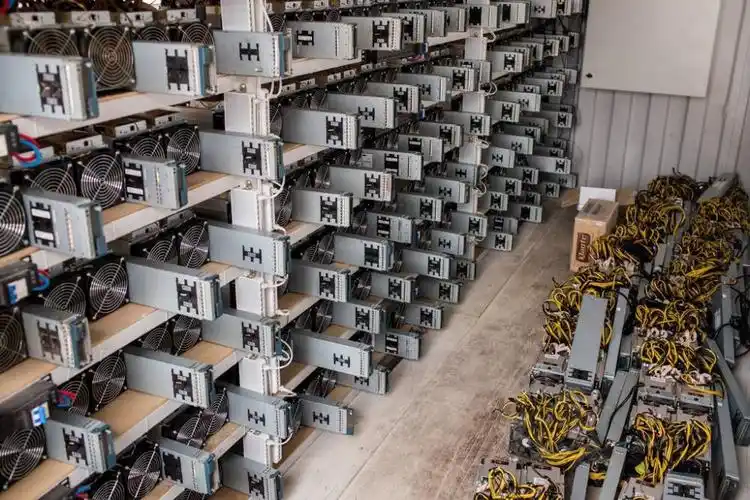The digital gold rush, fueled by the ever-volatile yet alluring world of cryptocurrency, has seen mining emerge as a significant industry. And at the heart of this industry lies the ASIC miner, a specialized piece of hardware designed to solve complex cryptographic puzzles, thereby validating transactions and earning rewards in the form of digital currency. Canada, with its relatively stable political climate, access to renewable energy sources, and cooler climates beneficial for heat dissipation, has become an increasingly attractive location for mining operations. But why are we suddenly seeing a surge in competitive pricing for ASIC miners in the Canadian market? The answer, as always, is multifaceted, intertwined with global economic currents, technological advancements, and the inherent dynamics of the crypto sphere itself.
One crucial factor influencing ASIC miner prices is the overall health and direction of the cryptocurrency market, particularly Bitcoin (BTC). When Bitcoin prices soar, demand for mining equipment inevitably follows, pushing prices upward. Conversely, bearish market conditions can lead to a glut of available miners, driving prices down as operators seek to offload equipment to recoup some of their investments. The recent market fluctuations have undoubtedly played a role in the price adjustments we’re observing in Canada. The ebb and flow of sentiment, the whispers of regulatory changes, and the pronouncements of influential figures – all contribute to this price volatility.
The competitive landscape of ASIC manufacturers also plays a significant role. Companies like Bitmain, Canaan, and MicroBT are constantly vying for market share, pushing the boundaries of hashing power and energy efficiency. The introduction of newer, more powerful models can render older generations less profitable, forcing sellers to lower prices to clear inventory. Canada, being a relatively open market, benefits from this competition, allowing mining operations to access a wider range of equipment at potentially lower costs. This technological arms race is a constant driver of innovation, pushing the boundaries of what’s possible and making the mining process ever more efficient.

Energy costs are a critical component of any mining operation, and Canada offers a distinct advantage in this regard. Provinces like Quebec and British Columbia boast abundant hydroelectric power, providing relatively cheap and clean energy sources. This lower operational cost can translate into a greater willingness to offer competitive pricing on mining hardware, as operators can afford to accept lower profit margins while still maintaining profitability. Furthermore, the colder Canadian climate helps to reduce cooling costs, a significant factor for large-scale mining farms. This combination of affordable energy and natural cooling resources creates a favorable environment for mining, making Canada a strategic location for many operations.
Furthermore, the proliferation of mining hosting services in Canada has also contributed to the competitive pricing. These services offer a turnkey solution for individuals or companies looking to enter the mining space without the hassle of setting up their own infrastructure. The competition among these hosting providers drives them to offer competitive rates on both hosting and equipment, further benefiting potential miners. These services often include everything from providing the physical space and power to handling maintenance and security, making it easier than ever to get involved in cryptocurrency mining. This accessibility is democratizing the mining process, attracting a wider range of participants and fostering innovation.

The global supply chain disruptions experienced in recent years have also had a knock-on effect on ASIC miner prices. Lockdowns, port congestion, and component shortages have all contributed to increased manufacturing costs and longer lead times. While these disruptions initially led to higher prices, the gradual easing of these bottlenecks has allowed manufacturers to increase production and reduce costs, which are then passed on to consumers. This complex interplay of global events highlights the interconnectedness of the cryptocurrency mining industry with the broader global economy.
Finally, regulatory clarity, or the lack thereof, can also influence ASIC miner prices. Jurisdictions with clear and favorable regulations tend to attract more investment and competition, which can lead to lower prices. While Canada has generally been seen as a relatively crypto-friendly jurisdiction, ongoing discussions and potential changes to regulations can still create uncertainty, impacting investment decisions and potentially influencing prices. The ongoing debate surrounding environmental concerns and the energy consumption of mining operations also plays a role, as stricter regulations could increase operational costs and impact the profitability of mining. This constant evolution of the regulatory landscape underscores the importance of staying informed and adapting to changing conditions.
In conclusion, the recent competitiveness of Canadian ASIC miner prices is a result of a confluence of factors, including cryptocurrency market volatility, competition among manufacturers, access to affordable energy, the growth of mining hosting services, the easing of supply chain disruptions, and the evolving regulatory landscape. As the cryptocurrency industry continues to mature and evolve, we can expect these factors to continue to shape the pricing dynamics of ASIC miners in Canada and around the world. Staying informed and adapting to these changes will be crucial for anyone looking to participate in the digital gold rush.
Edwin
08/30/2023The article explores recent trends in Canadian ASIC miner pricing, highlighting factors such as increased competition, technological advancements, and shifting market demands. It delves into how local miners are adapting to global fluctuations, enhancing efficiency, and thereby driving prices down, making mining more accessible. Unique insights on import tariffs and currency fluctuations further enrich the narrative, painting a dynamic picture of the Canadian mining landscape.